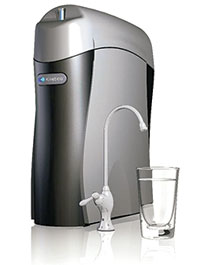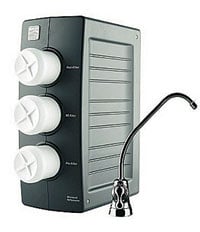
Although drinking water in the Washington area meets federal
safety standards, water filters are common in area homes. Refrigerator,
under-the-counter, and even carafe filters all aim to purify water, but
can any of them filter out endocrine-disrupting compounds? If so, which
ones do it best?
Thomas Zoeller, a biology professor at the University of
Massachusetts-Amherst and a coauthor of the Endocrine Society’s scientific
statement on endocrine-disrupting chemicals, says that “filters using
reverse osmosis would be the most reliable, but also the most expensive,
to rid water of EDCs.”
Reverse osmosis (RO) works by reversing the flow of water
during natural osmosis, allowing the water to pass from more concentrated
to more dilute solutions through a semipermeable membrane. RO systems,
both countertop and under-the-sink, are ranked by the Centers for Disease
Control and Prevention as highly effective in removing bacteria, viruses,
and common chemical contaminants, including lead, copper, and
chloride.

Zoeller can’t say for sure which manufacturer of RO filters is
best, so he suggests consulting Consumer Reports. “I know the methodology
behind their tests and trust their results,” he says.
The May 2010 issue of Consumer Reports listed the Kinetico K5
Drinking Water Station ($1,800), the Coway P-07QL ($600), and the Kenmore
Elite 38556 ($200) among the top choices.
If you want to double your filtration efforts, the
Environmental Working Group says a filter that utilizes an RO system
combined with a superior carbon filter—such as the under-the-counter
Multipure Aquacomplete ($580)—is one way to go.
Go back to What’s In the Water We Drink?
This article appears in the July 2012 issue of The Washingtonian.
















